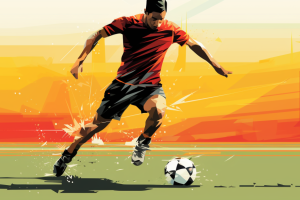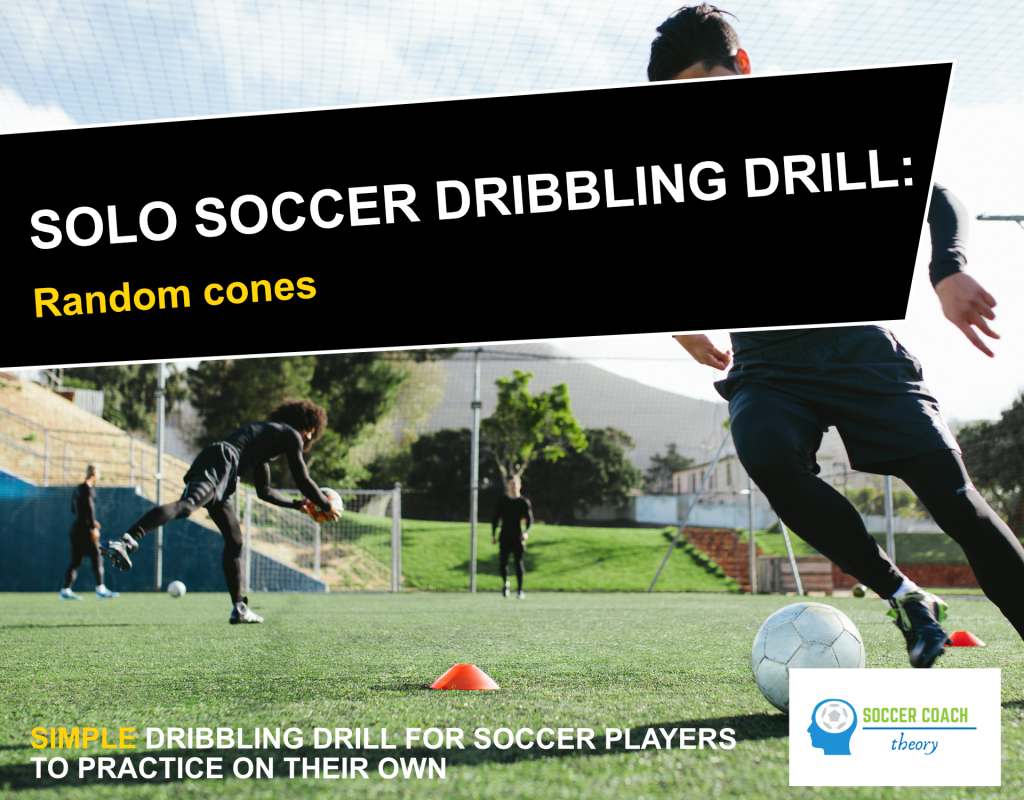What to Do After Soccer Training – 8 Ways to Speed Your Recovery
After a grueling soccer training session, you’re probably feeling exhausted and sore. But don’t worry, there’s hope for a speedy recovery!
In this article, we’ll show you eight ways to bounce back faster and get back on the field in no time. From proper hydration to stretching techniques, we’ve got you covered.
So, lace up your boots and get ready to take your recovery game to the next level. It’s time to make sure you perform at your best on game day!
Key Takeaways
- Recovery techniques such as foam rolling and cold water immersion are important for preventing injuries and improving performance.
- Consuming carbohydrate-rich foods after training replenishes glycogen stores.
- Active recovery exercises like jogging or cycling increase blood flow to muscles and aid in repair.
- Proper nutrition, stretching and flexibility exercises, and quality sleep are crucial factors in speeding up recovery for soccer players.
Why Recovery is Important for Soccer Players
Recovery is crucial for soccer players because it helps prevent injuries and improves performance. After intense training sessions, your muscles need time to recover in order to avoid overuse injuries and enhance your overall performance on the field.
To ensure muscle recovery and recover faster, there are various techniques you can incorporate into your routine. Foam rolling is a great way to relieve muscle soreness by applying pressure to specific areas of tightness or discomfort. Immersion in cold water, such as ice baths or cold showers, can also aid in reducing inflammation and promoting quicker recovery.
Consuming carbohydrate-rich foods post-training provides essential fuel for your muscles to replenish glycogen stores.
How Much Active Recovery Does a Soccer Player Need?
A soccer player typically needs to engage in sufficient active recovery to facilitate optimal performance.
Active recovery refers to low-intensity exercises that help reduce muscle soreness and promote faster recovery.
To incorporate active recovery into your routine, try incorporating light jogging or cycling sessions after intense training. These activities increase blood flow to your muscles, helping to remove waste products and deliver nutrients for repair.
Additionally, consider using specific recovery techniques such as foam rolling or stretching to target and alleviate muscle tightness.
Recovery strategies for soccer players also include proper hydration and nutrition, as these play a crucial role in replenishing energy stores and promoting muscle repair.
8 Ways to Speed Your Recovery in Soccer
To speed up your recovery in soccer, there are several key points to consider.
First, proper nutrition is essential for providing your body with the fuel it needs to repair and rebuild muscles.
Second, incorporating stretching and flexibility exercises into your routine can help improve range of motion and prevent injury.
Third, active rest and recovery activities such as light jogging or swimming can promote blood flow and aid in muscle repair.
Additionally, ice baths and cold therapy can reduce inflammation and alleviate muscle soreness.
Lastly, using a foam roller for muscle tension can help release knots and promote faster recovery.
Proper Nutrition for Recovery
Eating a balanced meal after soccer training can help accelerate your body’s recovery process. Proper nutrition plays a crucial role in helping you recover from intense training sessions and reduce muscle damage. Here are three key ways that proper nutrition can aid in your recovery:
- Enhanced Protein Synthesis: Consuming protein-rich foods like lean meats, eggs, or plant-based proteins helps stimulate protein synthesis, which aids in repairing and rebuilding damaged muscles.
- Replenishing Energy Stores: Including carbohydrates in your post-training meal helps replenish glycogen stores, providing the energy needed for future training sessions.
- Promoting Sleep and Overall Performance: A good night’s sleep is essential for optimal recovery. Foods rich in tryptophan, such as turkey or bananas, promote better sleep quality, allowing your body to recover effectively and improve performance on the field.
Stretching and Flexibility Exercises
Improve your flexibility and prevent injuries by incorporating stretching exercises into your routine. After intense soccer training, it’s important to give your muscles the stretch they need to recover properly.
Static stretching, where you hold a stretch for 30 seconds or more, can help lengthen and relax tight muscles. Another effective method is using a foam roller or getting a deep tissue massage to release tension in the muscles.
Alternating between warm baths and ice baths can also aid in muscle recovery by reducing inflammation and increasing blood flow. Stretching not only helps with recovery but also improves overall flexibility, which is crucial for preventing future injuries on the field.
Transitioning into active rest and recovery after stretching will further promote healing and prepare your body for the next training session.
Active Rest and Recovery
After an intense soccer training session, it’s important to prioritize active rest and recovery. This allows your body time to heal and prepare for the next game. Here are three key ways you can speed up your recovery and ensure the best possible performance in your next session:
- Engage in light aerobic activity: Going for a brisk walk or bike ride can help increase blood flow and reduce muscle soreness.
- Incorporate stretching and mobility exercises: These will help improve flexibility, prevent injuries, and overall improve your game.
- Consider cold water immersion: Taking ice baths or using cold therapy techniques can promote faster recovery by reducing muscle inflammation.
By incorporating these strategies outside of soccer practice, you’ll give your body the opportunity to recover quickly and reduce muscle soreness.
Now let’s dive into the benefits of ice baths and cold therapy for enhancing post-training recovery.
Ice Baths and Cold Therapy
Engaging in cold water immersion, such as ice baths or cold therapy techniques, can help reduce muscle inflammation and promote faster recovery after intense soccer training.
Ice baths are a popular method used by athletes to aid in the recovery process. By exposing your body to extremely cold temperatures, you can constrict blood vessels and reduce swelling in your muscle tissue. This helps to alleviate any delayed onset muscle soreness and decrease inflammation in your muscles.
Cold therapy techniques, like using ice packs or contrast baths, can also provide similar benefits. By targeting specific muscle groups with these methods, you can speed up your recovery and get back on the field quicker.
Foam Rolling for Muscle Tension
To alleviate muscle tension, try incorporating foam rolling into your post-workout routine. Foam rolling is a self-myofascial release technique that uses a foam roller to apply pressure to specific muscles in order to relieve tightness and knots.
Here are three reasons why foam rolling can help you recover and speed up muscle recovery:
- Improve blood flow: Foam rolling helps increase blood circulation, delivering oxygen and nutrients to your muscles, which aids in their repair and recovery.
- Reduce exercise-induced muscle damage: Intense workouts can cause microtears in your muscles. Foam rolling can help break down scar tissue and adhesions, promoting faster healing and reducing soreness.
- Increase flexibility and range of motion: By targeting tight areas, foam rolling helps restore muscle elasticity, allowing for better overall mobility and preventing injuries.
Incorporating foam rolling into your post-workout routine, along with eating a healthy meal to replenish nutrients, will greatly assist in restoring your muscles and helping you recover from intense soccer training or any other physical activity.
Sleep for Optimal Recovery
Getting enough quality sleep is essential for optimal muscle recovery and overall physical performance. After soccer training, your body needs time to rest and repair itself. A good night’s sleep can help improve muscle recovery by allowing your body to replenish energy stores, repair damaged tissues, and release growth hormones.
It’s important to listen to your body and give it the rest it needs. Aim for a consistent sleep schedule and create a relaxing bedtime routine to promote better sleep quality. Avoid caffeine and electronic devices before bed as they can interfere with your ability to fall asleep.
Adequate sleep will set the stage for effective recovery after training sessions.
Now that you understand the importance of sleep for muscle recovery, let’s move on to another crucial aspect: hydration and fluid intake.
Hydration and Fluid Intake
Make sure you’re consistently drinking enough fluids throughout the day to stay properly hydrated. As a soccer player, staying hydrated is crucial for your game performance and overall health.
Here’s why:
- Improved physical performance: Proper hydration allows your body to perform at its best during a soccer match or practice. It helps maintain your energy levels, endurance, and agility on the field.
- Enhanced mental focus: Dehydration can negatively affect your concentration and decision-making abilities during a game. By keeping yourself well-hydrated, you’ll be able to stay mentally sharp and make better decisions on the field.
- Faster recovery: Hydration plays a key role in muscle recovery post-game or practice. Drinking enough fluids helps with muscle repair and reduces the risk of injury.
Try Mental Training – VR Soccer Training
Using VR soccer training can improve both your mental focus and decision-making abilities on the field – It’s also great way to train while resting. It is an extremely important part of your recovery as a soccer player.
Engaging in VR training sessions will not only help you enhance your skills, but it will also provide a much-needed break for your body after intense physical workouts.
By stimulating realistic game scenarios, VR soccer training apps help you stay mentally sharp and alert, enabling you to make quick and accurate decisions during matches.
Additionally, this type of training can be beneficial in reducing muscle soreness post-training by providing a low-impact workout that still engages your mind and keeps your body active.
What to do After Soccer Training to Make Sure You’re Performing on Game Day
After soccer training, you’ll want to prioritize your recovery routine to ensure optimal performance on game day. Taking your recovery seriously is essential as it reduces the risk of injury and allows your body to recover effectively.
Here are three key steps to incorporate into your post-training routine:
- Ice baths: Ice baths are great for reducing inflammation in the body and promoting muscle recovery. Fill a tub with cold water and add ice cubes, then immerse yourself for 10-15 minutes.
- Stretching and foam rolling: Stretching helps improve flexibility and reduce muscle soreness, while foam rolling targets tight knots in the muscles, aiding in their relaxation.
- Epsom salt bath: Soaking in an Epsom salt bath can help relax muscles, reduce swelling, and relieve any lingering soreness or fatigue.
Conclusion
As you wrap up your soccer training, remember that recovery is key to your performance. Take the time to prioritize your body’s needs and engage in active recovery.
Stretch those tired muscles, indulge in a soothing ice bath, and fuel your body with nutritious food. Embrace these rituals as symbols of self-care and growth.
Just as a butterfly emerges from its cocoon, you too will emerge stronger and ready to dominate on game day. So seize this opportunity for rejuvenation and soar towards success!






![Soccer Attacking Combinations and Finishing Drill [+ Diagrams]](https://soccercoachtheory.com/wp-content/uploads/2022/12/Soccer-Attacking-Combinations-and-finishing-drill.png)

